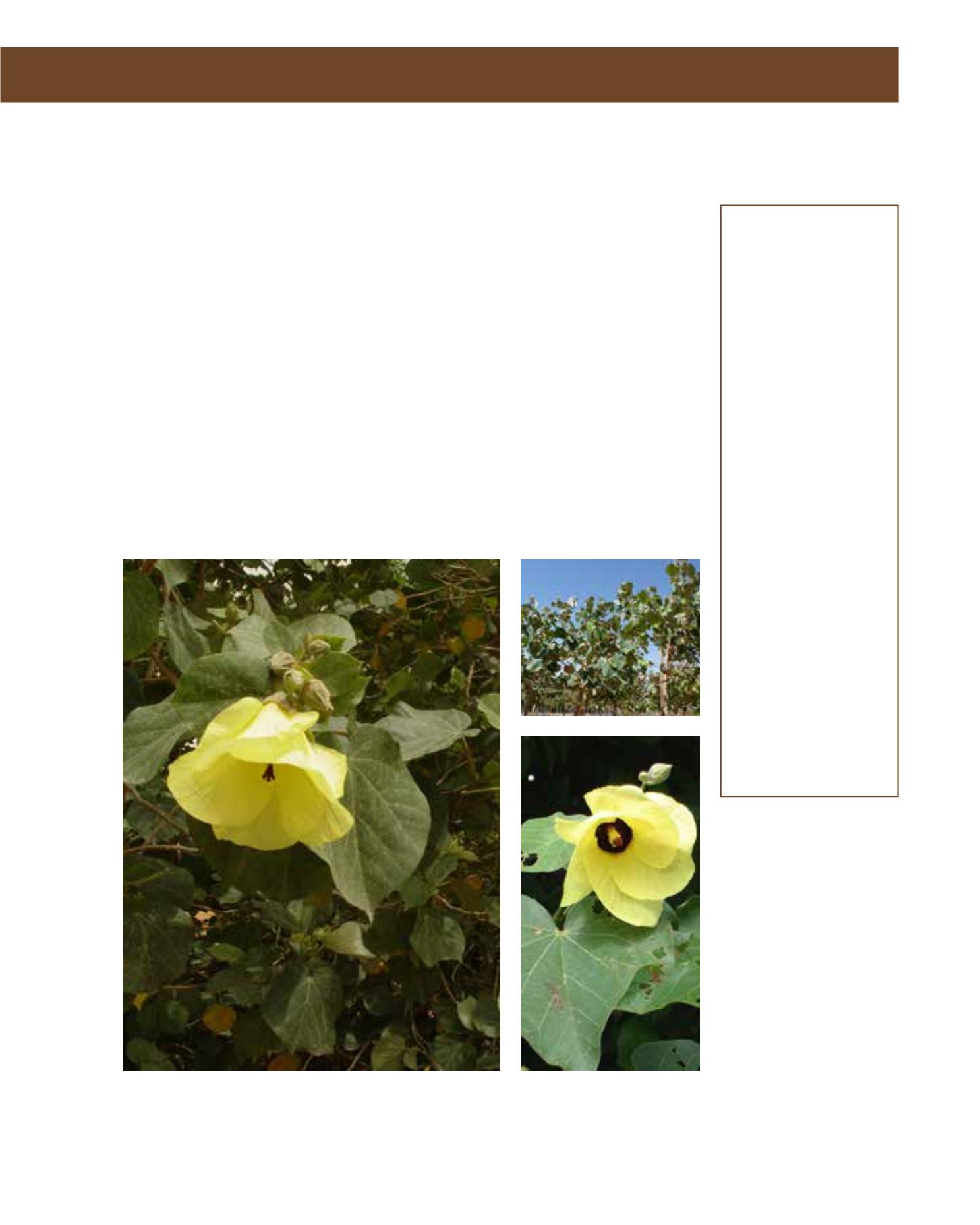

GENERAL
Origin
:
sub-tropical
Vigour
:
normal growth
rate, fairly fast
growing, fast
growing
Humidity
:
semi-humid, very
humid, extremely
humid
Propagation :
sowing and
pricking out,
cuttings
Maintenance :
moderate
CONDITIONS
Dessication :
vulnerable
Stagnant water :
resistant
Irrigation
:
medium, high
Salinity/ppm :
very high (10000
ppm)
Hardiness
:
+3°C
SHAPE
Type
:
tree
Height
:
10 m
Spread
:
10 m
Foliage
:
evergreen
FLOWER
Colour
:
bright yellow,
centre: deep
purple, when
old: red
Size
:
15 cm
Period
:
March -
November
FRUIT
Type of fruit :
capsule
Fruit size
:
2.5 cm
The Seacoast Mallow is found growing wild in subtropical, coastal regions of southern Asia. It is
an ornamental tree attaining up to 10 metres in height and width and, owing to its provenance
along watercourses, it tolerates stagnant water better than other trees. High salinity and even
brackish water are tolerated. It grows fast in a variety of soils and tolerates some drought, but
does not appreciate low atmospheric humidity combined with prolonged dryness. Leaves are
heart-shaped, evergreen and make a dense crown. Bright-yellow petals form a cup some 15 cm
across with a long carpel protruding from a crimson centre. After just one or two days, they are
shed, so that trees are not ideal canopies for pedestrian precincts. Often, they turn orange or
red before they are dropped. Apart from this bad habit, there are no further disadvantages, so
that this species is often seen as an appealing street tree. Seeds should be stratified and soaked
in warm water prior to sowing, and hardwood cuttings also grow readily to imitate the traits of
the parent plant. The latter will also flower sooner than plants grown from seeds. The Seacoast
Mallow is a vigorous plant that does well in containers. It withstands pruning and may be kept as
a small standard or used as a hedge for screening. For flowering, it requires plenty of light, and
frequent irrigation with occasional fertilisation is recommended. Light frosts may damage the
leaves, but plants recover quickly. There is often confusion in Arriyadh between this plant and
Thespesia populnea.
162
Hibiscus tiliaceus,
Malvaceae
Seacoast Mallow
















